3D Printing in Science
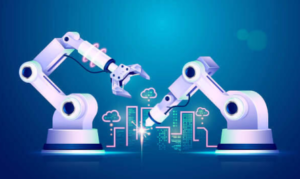
3D printing is transforming numerous sectors. It also affects scientific research by helping to create precise, customisable, and complex structures previously impossible to make. Here, we will look at
- the creative use of 3D printing in science and
- how it is changing the process of research and development.
1. 3D Printing in Biomedical Science
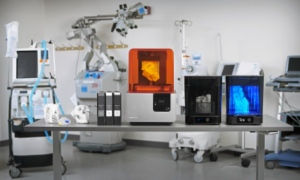
Custom Prosthetics and Implants
In the field of biomedical science, 3D printing of custom prosthetics and implants is one of its most powerful applications. The existing prosthetic production processes are complex. It frequently results in devices that only loosely match the patient’s anatomy. On the other hand, prosthetic limbs made with 3D printing can be made to precisely match the patient’s measurements. In many cases, this could result in a better fit and better function. Successful surgeries using 3D-printed implants suggest that this technology could improve patient outcomes. For example –
Check out our course about Certification in Biomedical Engineering on Jobsland.
Organ and Tissue Engineering
A subcategory of 3D printing is bioprinting. It allows for the layered manufacturing of living cells into tissues and organs. It is a process with the potential to revolutionise organ and tissue engineering. However, printing fully functional human organs is still a ways off. Researchers are making major progress in generating tissue for drug testing and research purposes. It eliminates the need for animal testing. It also speeds up the development of new life-saving treatments.
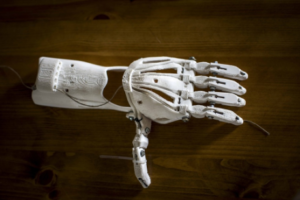
Drug Development and Testing
3D printing is also aiding the development and testing of drugs in labs. It models human tissues and organs and uses them to test drugs. This means that
- more reliable,
- safer and
- cheaper
drug results can be produced. For example,
- 3D-printed models of livers can be used to test the effects of drugs,
- saving lives or
- reducing the cost of treating diseases.
The technology lets scientists test the effects of drugs in a safe and controlled environment rather than on a patient. Additionally, 3D-printed drug delivery and formulation tools will allow for more precise dosing of medications with a wider range of forms and shapes.
2. 3D Printing in Environmental Science
Coral Reef Restoration
Environmental science has also seen the development of 3D-printed artificial coral structure. It can create a habitat for coral larvae. Just like natural corals, these artificial structures help provide a foundation on which the coral larvae can settle and grow. Ultimately, this speeds up the recovery of a coral ecosystem. Case studies showes that this approach is a rather effective solution to re-settling damaged reefs.

Wildlife Conservation
In wildlife conservation, 3D printing is used to create replicas of animals for research and education purposes. By having consistent and accurate replicas of endangered species, scientists can conduct studies without having live specimens. It reduces harm to the animals. Moreover, 3D printing is used to create habitats and nesting sites for endangered animals. This way, it supports conservation efforts and helps increase the population of endangered species.
Pollution Control
3D printing can be used to fight pollution. It can help design and test new filtration systems and pollution control devices. 3D printer files are easy to modify and handle. As a result, multiple prototype shapes can be swiftly built for testing before committing to larger production runs. In this way, environmental solutions can be refined and developed with high efficiency.
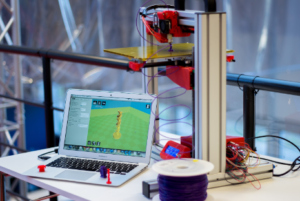
3. 3D Printing in Space Exploration
Manufacturing in Space
One of the most exciting possibilities of 3D printing is its use in space. This would enable the creation of tools and parts exactly where and when they are needed. This reduces the need for large cargo on missions. 3D printers can already create tools and spare parts on the International Space Station (ISS).
Habitat Construction on Other Planets
Looking ahead, 3D printing could be used to build habitats elsewhere in the Universe. Academics are designing concepts for habitats on Mars and on the Moon. Those would be constructed using materials found on-site. This thus limits the need to transport building materials from Earth. These printed habitats could provide a safe and sustainably habitable environment for astronauts on long-term missions.
Satellite and Aerospace Components
It’s also changing the way we design and produce satellite and aerospace parts. With 3D printing, we can manufacture custom parts on short time with a level of detail that was difficult or impossible to achieve before. This, in turn, speeds up the development and deployment of new technologies.
Take our Confined Space Work Essentials Diploma course from Jobsland.
4. 3D Printing in Material Science
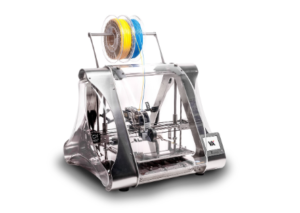
Developing New Materials
Thanks to the rise of 3D printing, researchers can now create new composite materials with superior properties. By playing with the combinations of materials and printing methods, materials scientists can create composites that are
- stronger,
- lighter, and
- harder-wearing
than those made with more traditional methods. The aerospace industry is just one of the companies that stands to benefit.
Testing Material Properties
3D printing allows you to create material test samples of the necessary quality and investigate their behaviour under various conditions. This leads to a better understanding of materials’ performance. This also enables the faster development of new materials and improves the reliability of material testing.
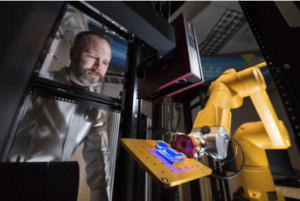
Nanotechnology Applications
We’re starting to see 3D printing at the nanoscale. 3D printing techniques allows for precise positioning of atoms or molecules. It enables the creation of novel nanomaterials with interesting properties for use in electronics, medicine and energy storage.
5. 3D Printing in Chemical Science
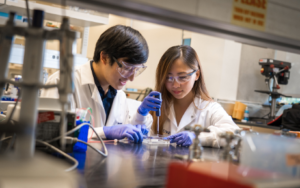
Chemical Reaction Vessels
3D printing benefits Chemists a lot. It allows them to manufacture unique reaction vessels tailored for certain chemical processes. Printed reactors facilitate optimised and safer chemical reactions. These also also make the experimentation and industrial-scale production of chemical reactions easier.
Catalyst Design and Testing
It is now possible to test and even improve novel and unique catalysts by creating and 3D printing catalysts with unique geometries that are not conceivable with standard synthesis methods. This advancement is bound to have far-reaching consequences in the future, from industrial fine chemical manufacturing to green chemistry and innovative catalytic processes.
Complete our Chemical Engineering Training Certificate course or Lab Technician Expertise Bundle of 18-courses.
Educational Models
3D printing can make more accurate molecular models. Those can help learners better understand chemical structures and reactions.
6. 3D Printing in Archaeology and Paleontology
Artefact Replication
Archaeologists are increasingly turning to 3D printing to make precise replicas of artefacts. This allows them to study the objects in detail and show them to the public.
Fossil Reconstruction
Palaeontologists are using 3D printing to reconstruct fossils and study extinct species. Scientists can fill in historical gaps by producing realistic replicas of fossilised bones and reconstructing whole skeletons of long-extinct species. Through their work, scientists are uncovering new truths about our evolutionary past.
Virtual Archaeology
Archaeologists are building immersive experiences that resemble time travel by combining 3D printing and virtual reality. These virtual reconstructions allow people to inhabit ancient sites and view objects such as sarcophagi in fine detail. They are tools for research and public engagement.
7. Challenges and Future Directions
Technical Challenges
Despite 3D printing’s great promise, several technical challenges remain. It is still difficult to assemble complex designs because of limitations in
- material properties,
- printing speed, and
- resolution.
But ongoing research is addressing these limitations, and the future promises considerable improvements.
Ethical Considerations
Any revolutionary technology has potential applications, but there are ethical concerns that need to be taken into account. What are the moral guidelines for using 3D printing to create biological materials or for other matters like reconstructing fossil poaching sites? Scientists are working on best practices and guidelines to help navigate these questions.
Future Trends
Along with the 3D printing of biological tissues and living cells, emerging technologies like quantum computing and advanced robotics are also anticipated to completely transform the industry. Through multidisciplinary cooperation between data scientists, engineers, and domain specialists, we will witness new scientific discoveries. Those will integrate 3D printing technology into mainstream scientific study and develop new applications and innovations.
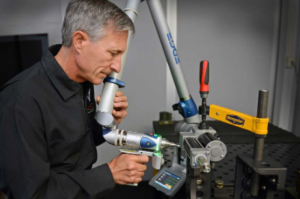
Conclusion
In biomedical science, 3D printing is making it possible to create custom prosthetics and even print organs. In space exploration, we can imagine personalised habitats being constructed. There is much to look forward to as advancements in this printing technology continue. Scientific research needs to be funded in a way that allows us to overlook the technological difficulties. Scientists need to stay up-to-date with the newest developments in this printing technology. It will help bring about change and work towards resolving related issues as they arise.
